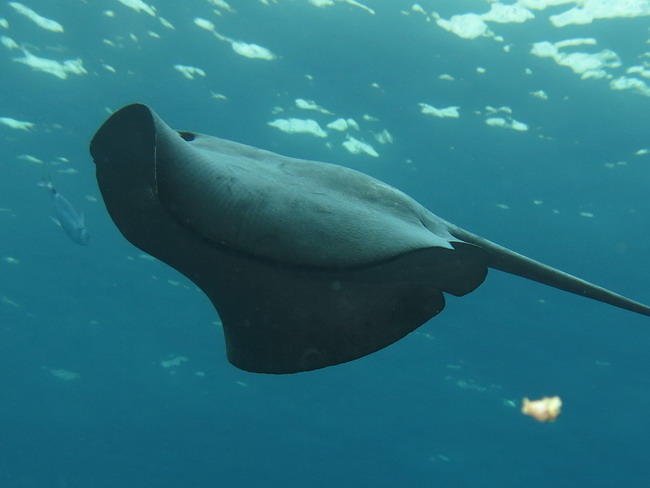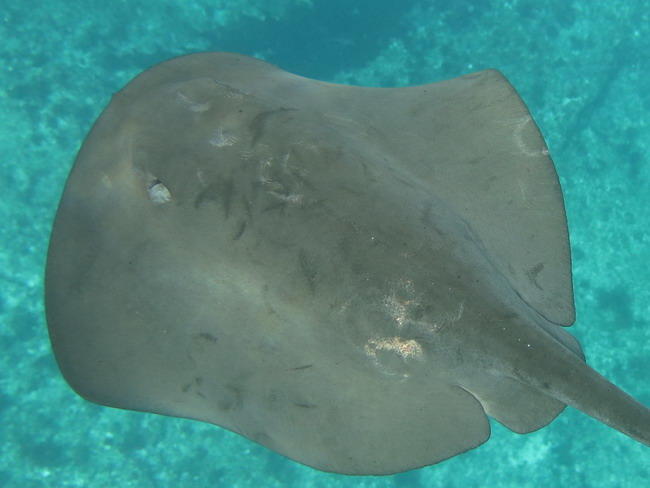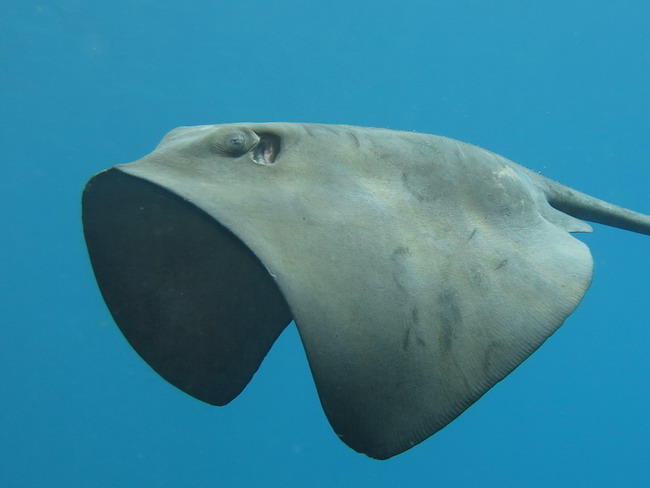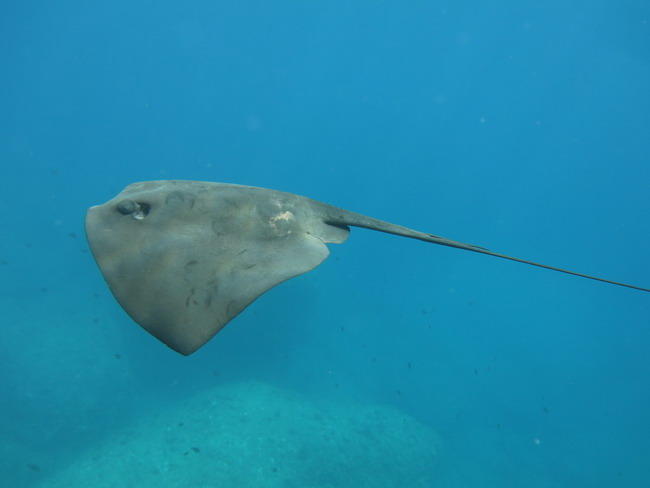
Sylvain Le Bris le 02/08/15
Bonsoir,Belle rencontre au palier ce matin !Par contre de quelle pastenague s'agit-il ? Une pastenague violette (Pteroplatytrygon violacea) ?Roberto PILLON le 05/08/15
If it is dark it is Pteroplatytrygon violacea.Sylvain LE BRIS le 05/08/15
Yes I know my picture is not good to see the underface but in situ I didn't see a white underface. I am pretty sure the underface was dark.Roberto PILLON le 05/08/15
With only these photos I'm not sure that the underface was not white, it is in the shade but can be white.Sylvain LE BRIS le 05/08/15
Thank you Roberto for your explanation.I don't have a better picture but the underface was not white. It was the same color of the back
Roberto PILLON le 05/08/15
Do you have a photo where we can see the color of underside?Sylvain LE BRIS le 03/08/15
Autre vue de la tête. le museau se limite vraiment à une très petite pointe ...
Sylvain LE BRIS le 03/08/15
Bonsoir Mincent
Vincent MALIET le 03/08/15
Bonjour Sylvain,
Certes, elle nage en pleine eau... même si la profondeur est toutefois faible, mais pour autant la réponse est négative : la couleur de P. violacea (encore nommée Dasyatis violacea) est caractéristique ; comme son nom l'indique, sa robe tire au pourpre. Ce caractère est à lui seul discriminant.
De plus, bien que l'on ne voit pas particulièrement bien l'avant du disque sur l'ensemble des clichés, il en est un (N° 55798) où l'on semble distinguer néanmoins un petit museau, ce que la pastenague violette ne possède pas.
A voir la série de clichés (extraits d'une vidéo je suppose), je penche en revanche pour D. centroura, la pastenague épineuse
Sylvain LE BRIS le 02/08/15
(non renseigné)
Sylvain LE BRIS le 02/08/15
(non renseigné)
Sylvain LE BRIS le 02/08/15
(non renseigné)
Les textes et images sont sous licence et ne sont pas libres de droit.
Pour les ayants-droits, connectez-vous.
Pour toute demande d'utilisation (exemple d'un formateur Bio de la FFESSM...) contactez nous ici.